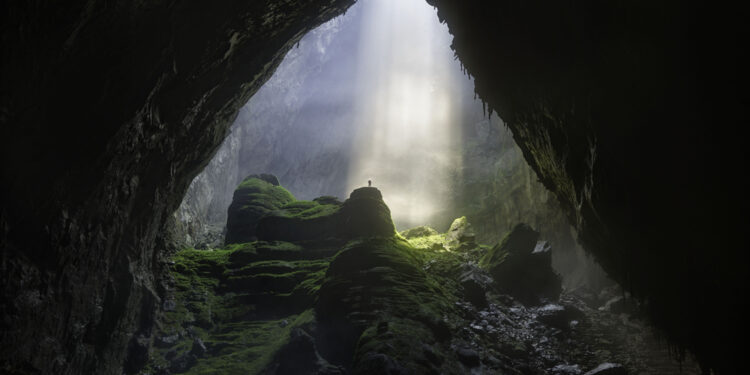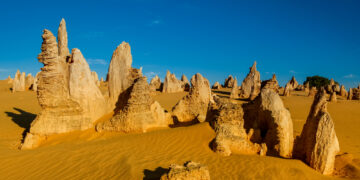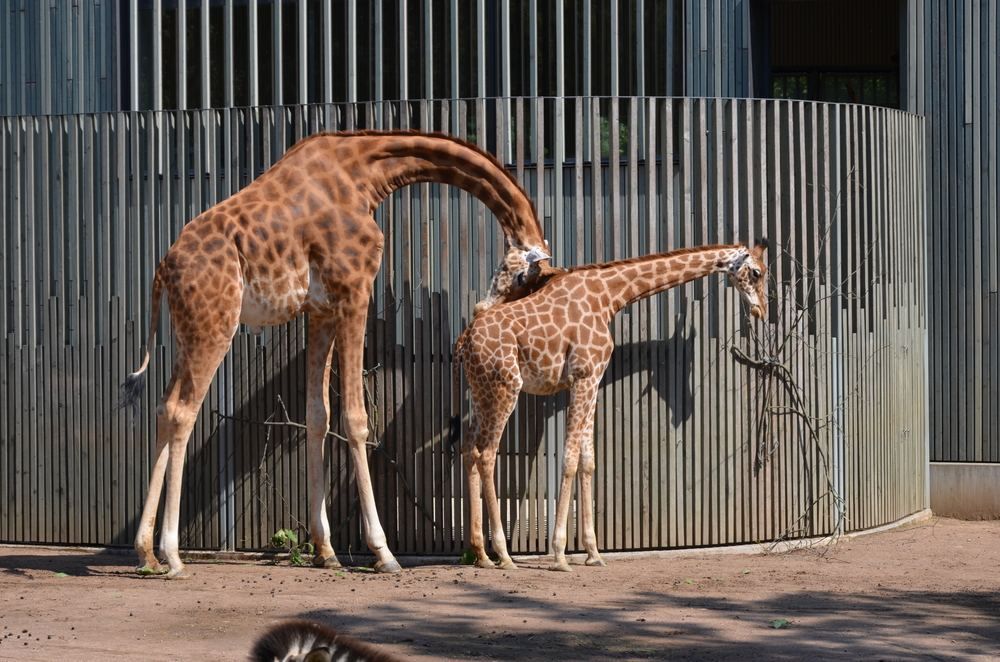Deep within the heart of Vietnam’s Phong Nha-Kẻ Bàng National Park lies an underground marvel that has captivated the world’s imagination: the Sơn Đoòng Cave. This colossal cave, which was only discovered in 1991, is the largest known cave in the world. With sections so massive they could accommodate a 40-story skyscraper, Sơn Đoòng is a natural wonder that continues to draw explorers, tourists, and scientists from all corners of the globe. In this article, we’ll delve into the fascinating history of the cave, its unique geological features, and the ongoing efforts to conserve and protect this delicate ecosystem.
A Serendipitous Discovery
The Sơn Đoòng Cave was first discovered in 1991 by a local man named Hồ Khanh, who stumbled upon the entrance while seeking shelter from a storm. However, due to the cave’s remote location and the dense jungle surrounding it, the entrance was not mapped until 2009, when a group of British cavers, led by Howard Limbert, conducted the first exploratory expedition. Since then, numerous expeditions have taken place, each revealing more about the cave’s breathtaking scale and complexity.
Geological Marvels
The Sơn Đoòng Cave is a product of the region’s unique geological history, which dates back some 400 million years. The cave was formed by the erosive action of the Rao Thuong River, which cut through the limestone bedrock over millions of years to create a vast network of underground chambers and tunnels. The cave is more than five kilometers long, with some chambers reaching heights of over 200 meters, making it the largest known cave in the world.
One of the most striking features of the Sơn Đoòng Cave is its enormous “skylights” or “dolines,” which are areas where the cave’s ceiling has collapsed, allowing sunlight to filter in and support lush vegetation. The largest doline in the cave measures approximately 90 meters in diameter and 200 meters high, creating a surreal, otherworldly environment that has been compared to a scene from the movie Avatar.
Another fascinating aspect of Sơn Đoòng’s geology is the presence of unique cave pearls. These pearls, formed by the slow deposition of calcium carbonate on grains of sand, are scattered throughout the cave, giving the floor a glittering, otherworldly appearance. The cave is also home to a plethora of stalactites and stalagmites, with some reaching heights of over 70 meters.
Biological Diversity
The unique microclimate created by the dolines in Sơn Đoòng has given rise to a rich and diverse ecosystem that thrives within the cave. Researchers have discovered numerous species of plants, insects, and even birds that are found nowhere else on Earth. The cave’s swift, clear river and its many subterranean lakes also provide a habitat for a diverse range of aquatic life, including fish, shrimp, and crabs.
Conservation Efforts
As the fame of Sơn Đoòng has grown, so too have concerns about the potential impact of tourism on the cave’s delicate ecosystem. Recognizing the need for sustainable management, the Vietnamese government has implemented strict regulations to limit the number of visitors and minimize their impact on the environment. Tour operators must adhere to a set of guidelines that include using eco-friendly lighting, avoiding the use of single-use plastics, and ensuring that all waste is removed from the cave.
Additionally, a portion of the revenue generated by tourism in the region is directed toward conservation efforts and supporting the local community. This approach not only helps to preserve the cave for future generations but also ensures that the benefits of tourism are shared with those who live in the surrounding areas.
Exploring Sơn Đoòng
For those fortunate enough to secure a spot on one of the limited guided tours, exploring Sơn Đoòng is a once-in-a-lifetime experience. The journey to the cave itself is an adventure, involving a trek through the dense jungle, crossing rivers, and navigating steep inclines. Once inside, visitors are treated to a breathtaking display of natural beauty, from the towering stalactites and stalagmites to the ethereal light filtering through the dolines.
Due to the challenging nature of the terrain and the need to preserve the cave’s delicate ecosystem, all visitors must be accompanied by a licensed tour operator. Tours generally last several days and include camping inside the cave itself, providing an unparalleled opportunity to immerse oneself in this awe-inspiring underground world.
Conclusion
The Sơn Đoòng Cave is a testament to the incredible power of nature and the wonders that can be found hidden beneath the Earth’s surface. As the world’s largest known cave, it offers a unique glimpse into a realm that few have been privileged to explore. Through the ongoing efforts of scientists, conservationists, and the local community, we can ensure that this magnificent natural treasure is preserved for generations to come. So, whether you’re an intrepid adventurer or simply an admirer of the world’s natural wonders, Sơn Đoòng is a destination that will continue to captivate and inspire.







